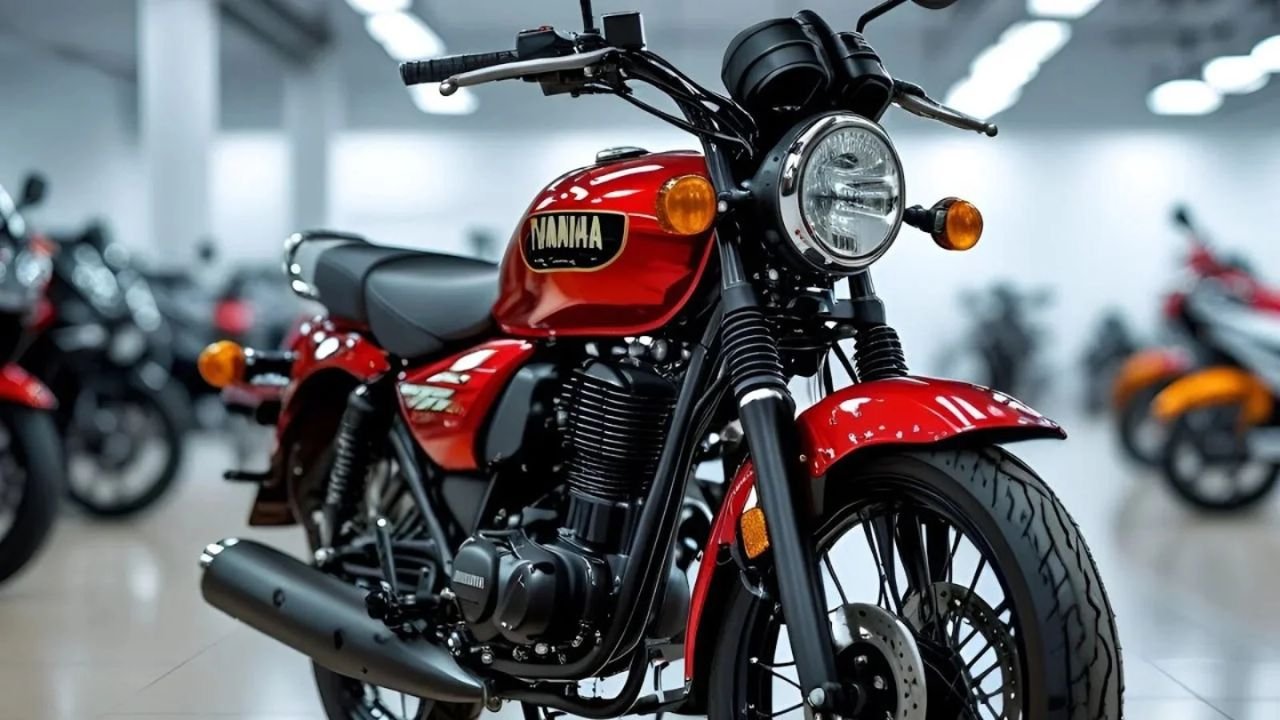The Yamaha RX100 is not just a motorcycle—it is an icon that has lived in the hearts of millions of riders across India. Even decades after it was discontinued, the Yamaha RX100 continues to command respect and admiration in a way very few motorcycles ever could. Known for its speed, lightweight design, thrilling exhaust note, and unforgettable riding experience, this bike still symbolizes freedom and youthful energy.
When it first entered the Indian market in 1985, the Yamaha RX100 was like a revolution on two wheels. At a time when motorcycles were slow, basic, and purely functional, Yamaha introduced something bold, powerful, and stylish. Overnight, it became the dream bike of an entire generation. Even today, the Yamaha RX100 remains a collector’s pride and an enthusiast’s first love.
In this detailed article, we’ll revisit the glory of the Yamaha RX 100, explore its features, design, performance, and legacy, and understand why it continues to dominate conversations about classic motorcycles in India.
Yamaha RX100: A Technical Overview
To truly understand the legend of the Yamaha RX100, let’s look at its specifications:
| Feature | Details |
|---|---|
| Engine | 98cc, air-cooled, 2-stroke |
| Maximum Power | 11 HP (approx.) |
| Transmission | 4-speed manual |
| Weight | Around 100 kg |
| Top Speed | Close to 100 km/h |
| Brakes | Drum (front and rear) |
| Mileage | 40–50 kmpl (with proper tuning) |
| Suspension | Telescopic forks (front), twin shocks (rear) |
| Production Span | 1985 – 1996 |
| Specialty | Distinctive exhaust note, unmatched performance |
At just 98cc, the Yamaha RX100 produced performance figures that rivaled higher-capacity motorcycles of its time. Its lightweight design and powerful two-stroke engine made it a thrill machine that could easily outpace many rivals.
Yamaha RX100: Changing Indian Roads Forever
The Yamaha RX 100 transformed motorcycling in India. Until the mid-80s, bikes were mostly designed for simple commuting. They were economical but boring. Then came the Yamaha RX 100, a compact motorcycle that behaved like a racer. With its 11 HP power output and 100 kg weight, it offered an unmatched power-to-weight ratio, giving riders blistering acceleration.
Youngsters instantly fell in love with it. The RX100 became a symbol of speed and independence. For college students, it wasn’t just a bike—it was a status symbol. For city commuters, it meant cutting through traffic with ease. And for enthusiasts, it was the first taste of real motorcycling thrill.
Yamaha RX100: The Legendary Exhaust Note
If there is one feature that made the Yamaha RX 100 unforgettable, it is its exhaust note. The bike had a raspy, aggressive two-stroke sound that could be recognized from a distance.
For bikers, the sound of the Yamaha RX100 was not just noise—it was music. The unique roar of its expansion chamber exhaust became a part of its identity. Even today, hearing the RX100 on the streets is enough to make heads turn and trigger nostalgia among old riders.
This “drumbeat” sound was more than just an engineering outcome; it was an emotion. It gave the Yamaha RX 100 its soul.
Also Read – Why the New Yamaha R15 V5 is Winning Hearts – Sporty Design, Premium Features & Thrilling Performance
Yamaha RX100: Timeless Design
The Yamaha RX 100 was designed with simplicity and purpose. Its compact rounded fuel tank, flat seat, chrome mudguards, and spoked wheels gave it a raw, muscular, and minimalistic look. Unlike modern bikes that focus on aerodynamics and digital features, the RX100 relied on pure mechanical charm.
Its exposed engine, bold decals, and vibrant colors gave it a youthful personality. Even today, a well-restored Yamaha RX100 parked next to a modern bike attracts more attention because its design is truly timeless.
Yamaha RX100: Performance That Made Riders Smile
Riding the Yamaha RX 100 was an experience like no other. The moment you twisted the throttle, the bike responded instantly with a burst of power. Its four-speed gearbox was smooth, and the handling was sharp and agile.
Whether on busy city streets or open highways, the Yamaha RX100 felt alive. It was perfectly balanced, and its lightweight frame made it easy to control even at higher speeds. The suspension setup, though simple, handled Indian road conditions surprisingly well.
The brakes were basic drum types, but because the bike was light, they did their job effectively. Every ride on the Yamaha RX100 gave the rider a smile, a rush of adrenaline, and a sense of connection rarely found even in today’s advanced machines.
Yamaha RX100: A Machine Built to Last
One of the biggest reasons the Yamaha RX 100 still rules Indian roads is its durability. The bike’s simple engineering meant fewer chances of breakdowns. Mechanics across the country could repair it with ease, and spare parts were widely available.
Even today, decades after its discontinuation, aftermarket and refurbished parts keep the Yamaha RX100 alive. It is not uncommon to see a well-maintained RX100 from the 1980s still starting with a single kick and running smoothly. That reliability is part of its legendary status.
Yamaha RX100: The Racer’s Choice
The Yamaha RX100 was more than just a commuter—it was also a racer’s weapon. Its lightweight frame and quick acceleration made it a favorite for drag racing and hill climbs. Enthusiasts modified the bike with expansion chambers, ported cylinders, and performance carburetors to unleash its hidden potential.
Even against bigger capacity bikes, a tuned Yamaha RX100 often emerged victorious in short sprints. For many riders, it was their first step into motorsport.
Yamaha RX100: A Collector’s Pride
Today, owning a Yamaha RX100 is like owning a piece of history. Collectors and vintage bike lovers are constantly searching for original models with matching engine and chassis numbers.
The prices of restored Yamaha RX100s have skyrocketed, with clean models fetching anywhere between ₹1 lakh to ₹2 lakh or more. Restorers go to great lengths to source original decals, paint schemes, and parts to keep the authenticity alive. For them, this bike is not just a machine—it is heritage.
Frequently Asked Questions About Yamaha RX100
1. Why was the Yamaha RX100 discontinued?
The bike was discontinued in 1996 due to stricter emission norms. Its two-stroke engine could not meet the updated pollution standards.
2. Can you still buy a Yamaha RX100 today?
You cannot buy a new one, but pre-owned and restored models are widely available in the vintage market.
3. Is the Yamaha RX100 practical for daily use?
Yes, but it lacks modern features like electric start, disc brakes, and high mileage. It also emits more smoke than today’s four-stroke bikes.
4. Will Yamaha relaunch the RX100?
There have been strong rumors about Yamaha bringing back the RX100 in a modern avatar, possibly with a four-stroke engine. While official confirmation is still awaited, enthusiasts are hopeful.
Yamaha RX100: A Legacy That Will Never Die
The Yamaha RX100 is not just a motorcycle—it is an experience, a memory, and a movement. It represented an era when bikes had raw power, distinctive sound, and unmatched simplicity.
From racing tracks to city streets, from the dreams of youngsters in the 80s to the prized possession of collectors today, the Yamaha RX100 has lived multiple lives. Even in the era of electric bikes and advanced technology, the RX100’s legacy continues to inspire.
If you ever hear that sharp, roaring exhaust note echoing in a street, pause for a moment. That’s not just a bike passing by—it’s the Yamaha RX100, a living legend reminding us of a golden age of Indian motorcycling.
Some Important Link
| Download News APP | Click Here |
| WhatsApp Group | Click Here |
| Home Page | Click Here |





